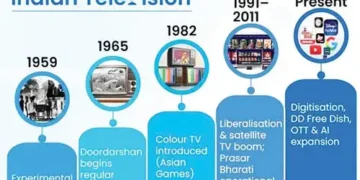Blitz Bureau
NEW DELHI: THIS festive season brings with it more than celebrations – it carries a sense of renewed economic optimism. The rollout of goods and services tax (GST) 2.0 has injected fresh momentum into India’s growth story by enhancing household purchasing power, easing business operations, and simplifying tax administration. By rationalising slabs and lowering rates across a range of consumer goods, the reform has delivered tangible savings for households, freeing up disposable income and helping stimulate demand.
In many ways, GST 2.0 reaffirms the fundamental principle that simpler taxation and greater transparency are among the most powerful enablers of sustained economic growth. With private consumption contributing nearly 61 per cent of India’s GDP, maintaining domestic demand is essential to sustaining the country’s growth trajectory. The new GST regime directly addresses this need. By cutting tax rates on goods that define everyday life, GST 2.0 has put purchasing power back into the hands of citizens. A Ficci-Cascade analysis, based on NSS household consumption data, estimates the reform will result in more than Rs 1.4 lakh crore of tax savings for households. When combined with the Rs 1-lakh crore income tax relief announced in the Budget, the total annual tax savings exceed Rs 2.4 lakh crore.
Such a boost to disposable income will not only drive higher consumption but also encourage greater savings and investment, creating a virtuous cycle of growth. This surge in consumption-led activity is expected to have multiplier effects across the economy – reviving capacity utilisation in manufacturing, strengthening supply chains, and spurring private investment. In a global environment marked by sluggish demand, India’s ability to rely on its own domestic market as a growth engine stands out as a defining strength.
In fact, Ficci’s latest quarterly survey on manufacturing has provided early indications of strengthening demand. Compared to Q1 FY26, when 77 pc of respondents reported higher or same production level, nearly 87 pc reported similar or better production level in Q2. Domestic demand is also increasing, with 83 pc of respondents expecting higher orders in Q2. The average capacity utilisation stands at around 75 pc, underscoring steady activity.
GST 2.0 is also expected to have a moderating influence on inflation, particularly in categories that weigh heavily in the consumer price index (CPI). By rationalising tax rates on fast-moving consumer goods, household appliances, and other essentials, the reform reduces the overall tax burden on consumers and businesses. This easing of prices is already reflected in macro indicators. In its most recent policy statement, the RBI acknowledged that GST rationalisation could lower prices across key CPI components.
The transformative power of GST 2.0 lies not only in rate cuts but also in its regulatory simplification and digital integration. The introduction of pre-filled returns, automated refunds, and simplified registration marks a significant step forward in improving India’s ease-of-doing business. A key feature is the Simplified GST Registration Scheme for small and low-risk entities. Leveraging data analytics, the system will process low-risk registrations within three working days, reducing bureaucratic friction and improving compliance. Nearly 96 per cent of new applicants will benefit from this fast-track mechanism.
With measures like GST 2.0, India is reinforcing the foundations of a more resilient, inclusive, and competitive economy, moving toward realising the vision of Viksit Bharat by 2047.
































